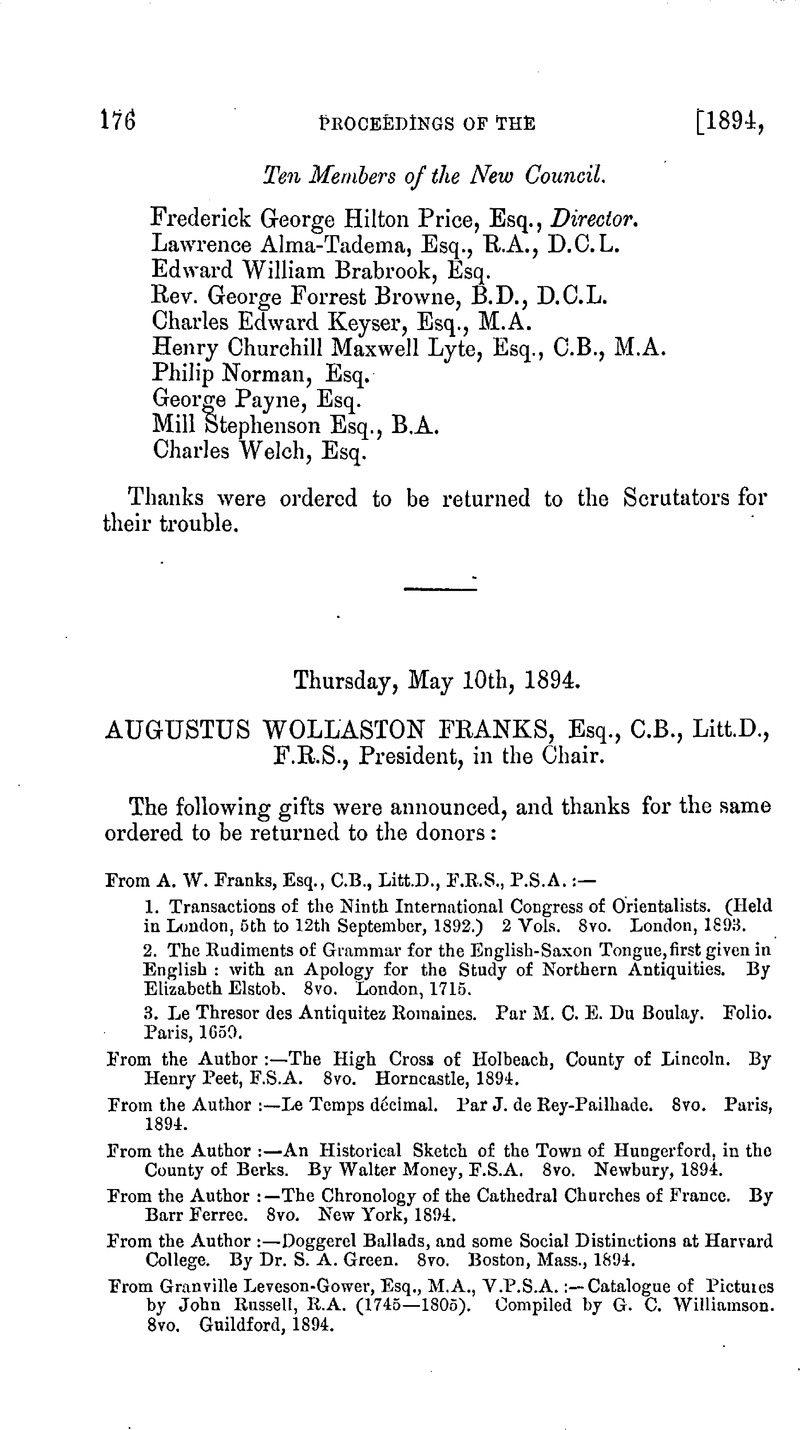No CrossRef data available.
Published online by Cambridge University Press: 10 May 2010

page 178 note * See Archaeologia Cantiana, xvii. 6–9, figs. 6, 6a.
page 178 note † Ib. viii. 259, 260 ; x. 312 ; vi. 173.
page 181 note * See Archaeologia Cantiana, xix., Catalogue, p. 31, No. 496.
page 183 note * Inventorium Sepulchrale, p. xxxvii.
page 183 note † Fundgeschichte einer uralten Grabstätte bei Nordendorf and in Fortgesetzte Fundgeschichte.
page 183 note ‡ Engelhardt, Conrad, Denmark in the Early Bronze Age. 4to. London, 1866.Google Scholar
page 189 note * A “pig” inscribed doccivsi, which Dr. Hübner, C.I.L, Vii. 1218, puts down as a pig of a private merchant, is not a lead pig at all, but a small piece of lead stamped very much like a potter's mark on “Samian” ware, and weighing about 2 or 3 ounces. It is in Mr. Bathurst's collection at Lydney, where I have seen it. A similar bit, stamped Catv, is in the possession of Mr. Pass, of Stoke Bishop, near Bristol, and came from the Mendip. It is curious that both Doccius and Catus appear on Samian ware.
page 189 note † The pig has since been acquired for the British Museum.